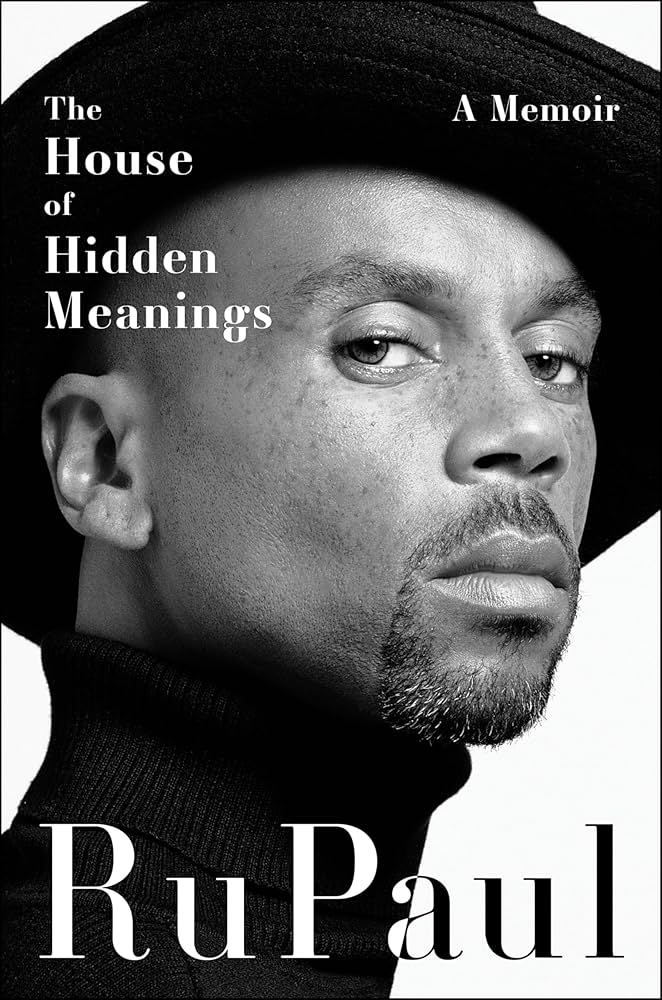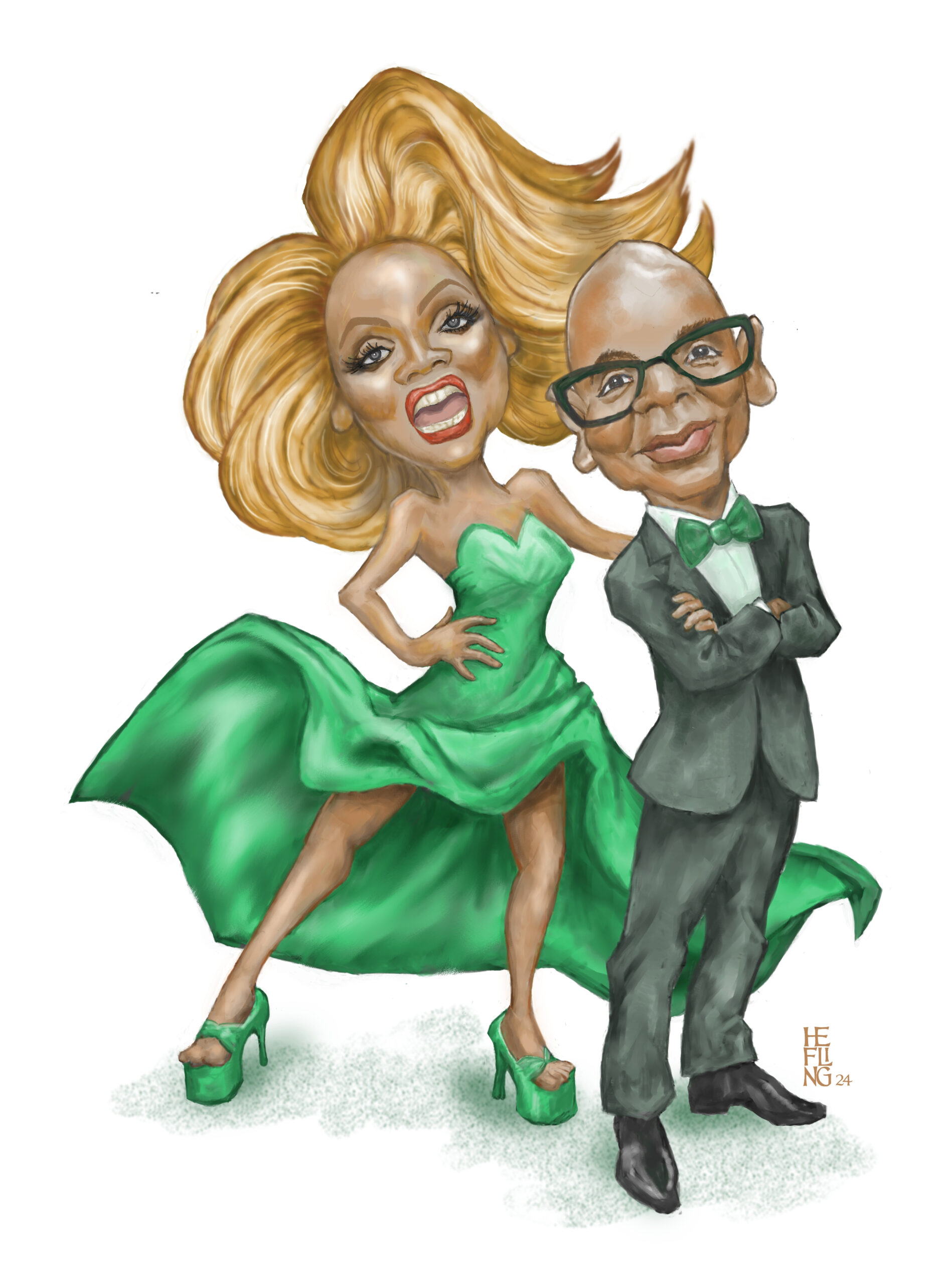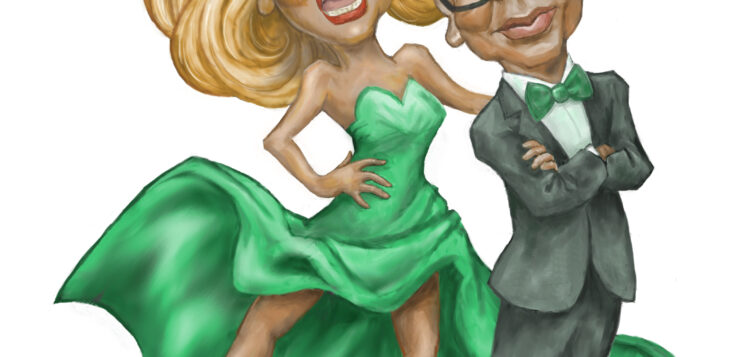 THE HOUSE OF HIDDEN MEANINGS
THE HOUSE OF HIDDEN MEANINGS
A Memoir
by RuPaul
Dey Street Books. 244 pages, $29.99
IN THE 1990s, Dolly Parton helped me bond with my first serious boy-friend. We were obsessed with her memoir Dolly: My Life and Other Unfinished Business, where she talks about losing weight by chewing food and spitting it out in a cup. That book was my introduction to Parton’s legend of growing up poor in the Tennessee mountains with a gaggle of siblings—and, of course, the coat of many colors that her mother lovingly stitched for her from rags. Parton is now pushing eighty, and she’s still talking about that damn coat. Like many successful celebrities, she burnished her rags-to-riches story early on, sold it as a brand, and has since repackaged it in everything from TV movies to cake mixes. This is lucrative but not very interesting. Why doesn’t she ever tell us anything new?
I thought about this while reading RuPaul’s latest book, The House of Hidden Meanings. This memoir is the fourth book from the world’s most famous drag queen, who cemented his celebrity status in the 1990s with his hit single “Supermodel” and now inhabits popular culture with his long-running reality show RuPaul’s Drag Race, with its many international spin-offs. Longtime fans won’t learn much new here. This memoir once again tracks the drag superstar’s origin story, this time from a pop psychology perspective. As a Scorpio, RuPaul sees himself as “a detective of the universe, searching the house for clues, trying to understand what it all meant.”
 His mixed-race mother Ernestine, known around her segregated San Diego neighborhood as “Mean Miss Charles,” is a cold woman who believes that the world is against her. His Black father Irving is a smooth talker. The odd couple had gotten married after Ernestine became pregnant with female twins. Then, in 1960, came RuPaul, a little showman whose goal was to make his unhappy mother laugh. (Another girl followed.)
His mixed-race mother Ernestine, known around her segregated San Diego neighborhood as “Mean Miss Charles,” is a cold woman who believes that the world is against her. His Black father Irving is a smooth talker. The odd couple had gotten married after Ernestine became pregnant with female twins. Then, in 1960, came RuPaul, a little showman whose goal was to make his unhappy mother laugh. (Another girl followed.)
After discovering Irving’s infidelity, RuPaul reports, Ernestine douses his car with gasoline, threatening to set it on fire. “Watching the scene playing out inside the rectangular box of the open garage door, it was just like looking at a television,” RuPaul reflects. (Divorce soon follows.) TV is central to RuPaul’s childhood, serving as “a portal to new worlds.” He finds early drag inspiration in Black comedian Flip Wilson and the blaxploitation movie Cleopatra Jones.
RuPaul hates school and enjoys doing drugs. As a teenager, he moves in with a sister and her husband, who teaches him how to detail cars. They make a business flipping exotic models when they move to Atlanta. Here, RuPaul finds his creative tribe, working as a go-go dancer, declaring himself a star on a public access show, and embracing a punk drag æsthetic in bands like Wee Wee Pole. He travels to New York to make his debut at the East Village’s legendary Pyramid Club. He’ll eventually meet important collaborators on Drag Race, but that’s still way off in the future.
His rise to fame isn’t a straight shot to the top. During a low point, RuPaul slinks home to live with his mother, gaining weight and feeling despondent before being reborn in New York with his glamorous supermodel persona. He meets his future husband, Georges LeBar, while dancing at the Limelight club. Finding and sustaining sobriety is a journey that will test their relationship for some time.
RuPaul’s memoir leads readers to the brink of discovery without always providing a payoff. Chalk it up to being a Scorpio, but he may just be too guarded to make himself that vulnerable. Writing about the time that AIDS first reared its ugly head, he notes that “my fears of sex ran deeper than that. It was a fear of what would happen if I really let myself go and allowed myself to be submerged into the realm of total abandon.” But does he let himself go? Not in these pages! Although he preaches the importance of being “loose and spontaneous,” his approach here is rigid and controlled. He seems to have forgotten the sage advice of his high school drama teacher: “don’t take life too fucking seriously.”
RuPaul gives you details but not much depth. For all his talk about self-discovery, he’s unwilling or unable to challenge ideas he’s previously asserted about himself. This book is long on self-mythologizing and short on true self-reflection. Rather than uncovering something new, The House of Hidden Meanings pays homage to the legend he created long ago.
Michael Quinn writes about books in a monthly column for the Brooklyn newspaper The Red Hook Star-Revue and on his website, which is at mastermichaelquinn.com.






